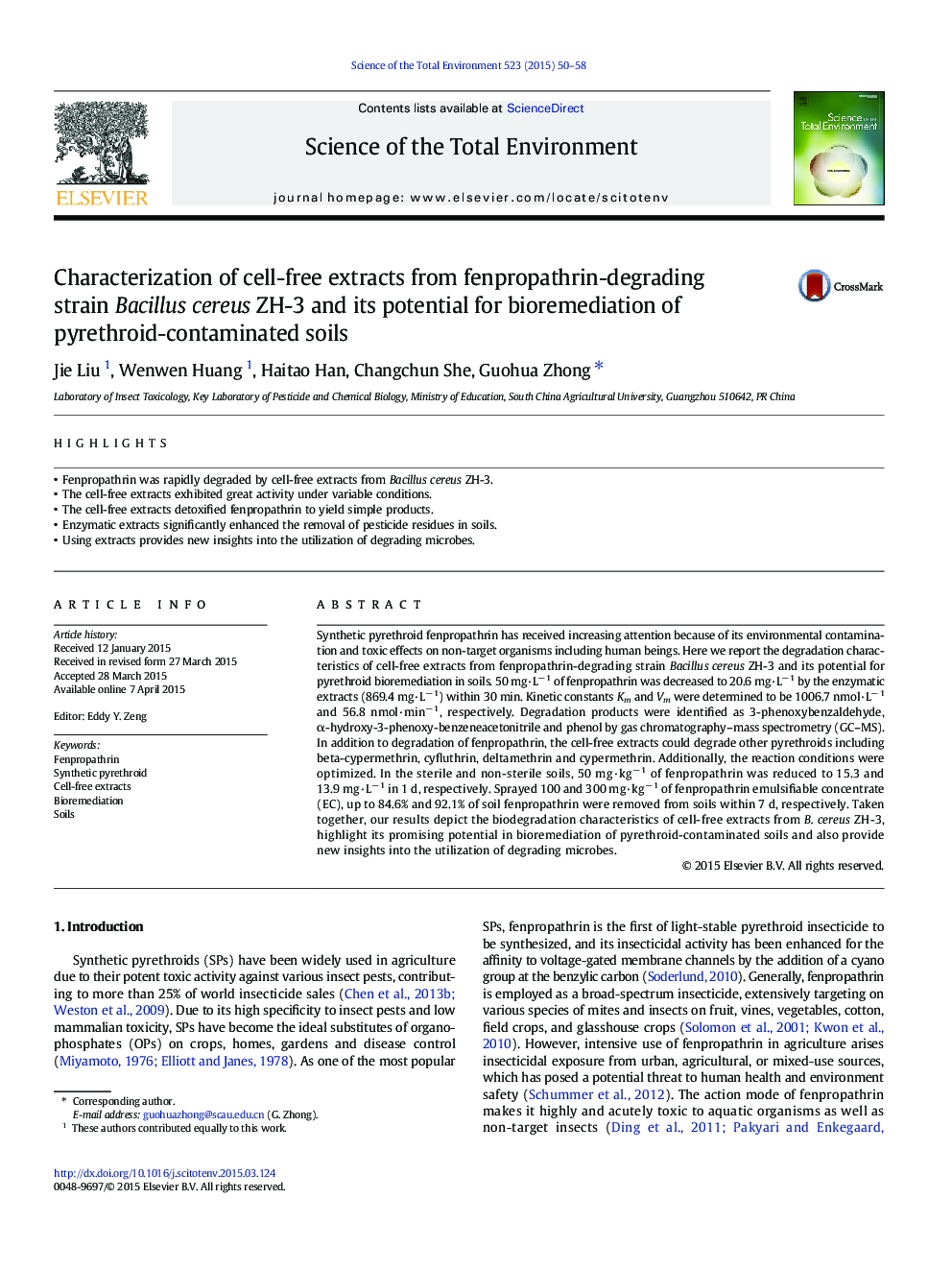| کد مقاله | کد نشریه | سال انتشار | مقاله انگلیسی | نسخه تمام متن |
|---|---|---|---|---|
| 4428391 | 1619758 | 2015 | 9 صفحه PDF | دانلود رایگان |

• Fenpropathrin was rapidly degraded by cell-free extracts from Bacillus cereus ZH-3.
• The cell-free extracts exhibited great activity under variable conditions.
• The cell-free extracts detoxified fenpropathrin to yield simple products.
• Enzymatic extracts significantly enhanced the removal of pesticide residues in soils.
• Using extracts provides new insights into the utilization of degrading microbes.
Synthetic pyrethroid fenpropathrin has received increasing attention because of its environmental contamination and toxic effects on non-target organisms including human beings. Here we report the degradation characteristics of cell-free extracts from fenpropathrin-degrading strain Bacillus cereus ZH-3 and its potential for pyrethroid bioremediation in soils. 50 mg·L− 1 of fenpropathrin was decreased to 20.6 mg·L− 1 by the enzymatic extracts (869.4 mg·L− 1) within 30 min. Kinetic constants Km and Vm were determined to be 1006.7 nmol·L− 1 and 56.8 nmol·min− 1, respectively. Degradation products were identified as 3-phenoxybenzaldehyde, α-hydroxy-3-phenoxy-benzeneacetonitrile and phenol by gas chromatography–mass spectrometry (GC–MS). In addition to degradation of fenpropathrin, the cell-free extracts could degrade other pyrethroids including beta-cypermethrin, cyfluthrin, deltamethrin and cypermethrin. Additionally, the reaction conditions were optimized. In the sterile and non-sterile soils, 50 mg·kg− 1 of fenpropathrin was reduced to 15.3 and 13.9 mg·L− 1 in 1 d, respectively. Sprayed 100 and 300 mg·kg− 1 of fenpropathrin emulsifiable concentrate (EC), up to 84.6% and 92.1% of soil fenpropathrin were removed from soils within 7 d, respectively. Taken together, our results depict the biodegradation characteristics of cell-free extracts from B. cereus ZH-3, highlight its promising potential in bioremediation of pyrethroid-contaminated soils and also provide new insights into the utilization of degrading microbes.
Journal: Science of The Total Environment - Volume 523, 1 August 2015, Pages 50–58